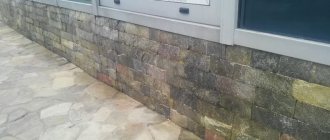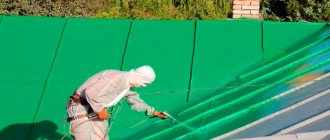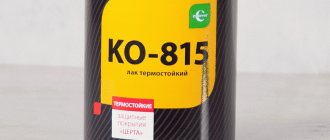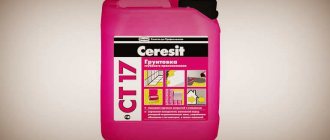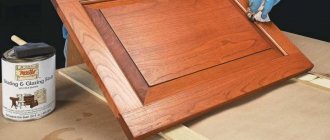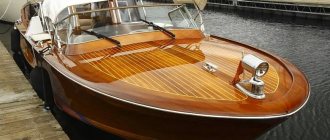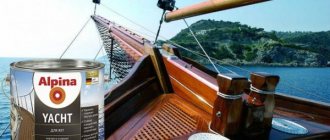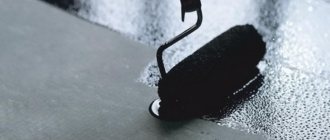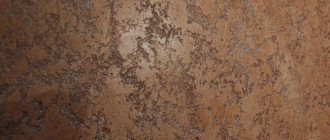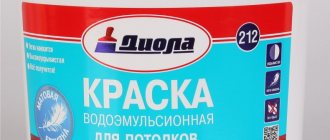Varnishing of glass products is often used to create a decorative layer. In addition, the varnish protects the material from damage and provides protection to the paint solution, such as paint. Glass varnish is also used as a decorative coating applied to ceramic surfaces. The varnished layer must be heat-resistant, moisture-resistant, and also immune to ultraviolet rays.
A good varnish should interact well with ceramics and glass. Transparent compositions are made, and with various shades, to create a decorative effect. Glass varnish materials are used to process mirrors, stained glass, and interior items made from glass and ceramics. In addition, these solutions are used to coat glass containers and all kinds of glass parts of devices and fixtures.
Often, factory-made products have a varnish protective layer. But sometimes it is necessary to use varnish for ceramics or glass at home, for example, to decorate stained glass, glass door inserts, mirrors, and ceramic products. For these purposes, a special glass varnish is used.
Types of glass varnishes
Polyurethane varnishes, which form a thin film layer, are famous for their elasticity and ability to dry. This type of varnish is produced in the form of a transparent liquid. You can add paint of the desired color to it to obtain the desired shade.
There is a silicate-based varnish that contains a mineral that gives the varnish the properties of an adhesive.
- Silicate varnish lays easily and evenly on the glass surface.
- This type of varnish is available in various shades.
- After painting the products with this varnish, they are reliably protected from exposure to sunlight.
Thanks to this, varnished products retain their original appearance much longer.
Decorative properties
Glass varnish gives products an exceptional appearance and decorative effect, protects multi-layer, screen and solid painting from atmospheric influences and ultraviolet radiation. When glass is painted with acrylic varnish, it acquires a milky white color, but after polymerization, it becomes completely transparent.
If you use varnish to protect sandblasted designs, then due to wetting when applying the varnish, an ice effect is created, the painted surface becomes shiny, glossy, light-scattering. Painting with mother-of-pearl and metallic effects is possible; in this case, the pigment paste is introduced directly into the varnish, in a ratio of no more than 0.5%.
Stained glass varnishes
This type of varnish is available not only in different shades, but also in different consistencies, which directly depends on the composition of the varnish.
Thus, stained glass varnishes are divided into:
- Opaque water-based material. This varnish has a short shelf life; experience is required to work with it;
- An alcohol-based material that is resistant to environmental influences. This is a bright and rich varnish for working with which you only need a paint brush.
General rules for choosing varnish
When choosing a varnish, we recommend following a number of simple rules:
- The varnish must be compatible with the material of the product. For example, not all acrylic varnishes adhere to metal. Any water-based varnish is not suitable for working with gold leaf.
- A high degree of adhesion of the varnish to the coating material must be ensured.
- It is necessary to take into account the conditions under which the thing you have made will be stored or used - indoors or outdoors, exposed to high temperatures or humidity, dust, etc. In other words, it is necessary to evaluate how the protective properties of a particular varnish are suitable for solving your specific problems .
- If the varnish performs a decorative function, then you need to clearly understand what result you want to get - glossy varnishes give glare, while matte varnishes retain the texture of wood or stone, making the material more durable and durable.
Acrylic based material
The most popular and popular is acrylic varnish. This varnish is made on a water or turpentine basis. The basis of acrylic varnish is a colorless resin, to which thickeners and stabilizers are added.
This type of varnish has a lot of advantages; we can say that it is a unique and universal means for covering various surfaces.
- In addition to the fact that it can be used as a final coat, the varnish can be mixed with acrylic paints or gouache to obtain a more saturated color and abrasion resistance of the material.
- When the varnish is completely dry, the surface of the product can be cleaned using water-based solutions. Acrylic varnish is widely used to coat glass and mirror surfaces, and when used as a paint, this varnish gives them an amazing glossy shine.
- The varnish is sold ready-made, that is, it is not required to be diluted with water or other liquids. If the varnish has not been used for a long time and has become very thick, then you can return it to its original consistency simply by adding a little water to it.
To dry acrylic varnish, air humidity of at least 50% is required; because of this feature of the varnish, it is problematic to use it in winter. The varnish is environmentally friendly and comes in several types: matte and glossy.
It also comes in satin—half matte. The varnish is available in liquid and aerosol form. When using the material, a synthetic brush or roller is required.
Scope and performance properties
Water-based acrylic varnish for glass is recommended for painting glass doors and furniture, electric lighting fixtures, interior parts, decorative dishes, and tiles. First of all, it is used for additional protection of the decorative paint layer during sandblasting, water and thermal transfer, UV printing, and multi-layer painting. Moreover, during thermal transfer, varnish is used both as a primer and as a protective coating for the design.
When painted, acrylic polyurethane water-based varnish forms a paint coating that is characterized by high levels of water resistance, wear resistance, hardness, transparency and adhesion.
Alkyd varnish
The varnish consists of alkyd resins and an organic solvent. The material is moisture resistant and tolerates temperature differences well.
- A product coated with alkyd varnish will be resistant to mechanical stress and highly fire-resistant.
- You will need less of this varnish than acrylic varnish for a similar product.
- The disadvantage of this material is its sharp unpleasant odor, toxicity and drying time.
When working with this varnish, brushes or a roller are required; the room must be well ventilated to avoid intoxication.
Description
Glass varnish PaliGlass FM
is a water-based acrylic polyurethane finishing varnish with a highly decorative coating, good chemical and mechanical resistance.
PaliGlass FM 1260 lacquer
– glossy transparent acrylic polyurethane water-based varnish for glass and ceramics.
PaliChem PA 7800 prom
– glass adhesion promoter; liquid transparent solution without foreign inclusions with a slight odor, hygroscopic.
Types of varnish
Nitrovarnish is similar in composition to alkyd, only this varnish dries faster. The material does not need to be diluted; it should be applied with a brush, spray gun or roller.
- Yacht varnish is a building material and is ideal for applying the final layer. This type of varnish is very resistant to external factors and temperature changes.
- Zapon is a material containing artificial resins and nitrocellulose. This type of varnish can be supplemented with various dyes. It can be applied to acrylic coating, it is resistant to temperature changes, but has an unpleasant odor when working with it.
- Varnish in the form of ink or a marker is a felt-tip pen for working with glass surfaces. This type of varnish can be easily removed if necessary. This feature of the varnish is associated with its unique composition. The product coated with this material has excellent adhesive properties. The material is applied using a rapidograph.
The adhesive varnish adheres well to the surface, protecting it from damage. The varnish does not turn yellow over time, unlike PVA glue. For a better effect and to give the product an elegant appearance, it is best to apply another layer of adhesive varnish, for example, acrylic varnish.
Varnishing process
It is necessary to varnish only clean products, without any contamination, for example, grease stains or dust. The fastest and most convenient way to distribute the varnish mixture over the glass surface is with a spray bottle. By spraying, a uniform layer is created, without drips or streaks. If you need to process a small product, you can use a regular brush, which allows you to either cover the entire product or create small designs with a varnish mixture with some shade. Using a brush, you can create stained glass, but for this you need to use only paints and varnishes marked “Stained Glass”.
Important! It is advisable to apply the varnish composition not in one, but in several layers, so that the protection of the product is maximum. The subsequent coating is applied only after the previous layer has dried.
Varnish for decorative purposes
Bituminous varnish is suitable for any surface; it is easy to apply, forming a dark-colored film. This varnish is used to create the effect of aging surfaces.
The material is used exclusively for decorative purposes. The degree of aging depends on the intensity of rubbing the varnish. The desired shade is achieved by adding paint to the material.
- Shellac is a material used for decoration. The varnish consists of natural resins that are secreted by certain types of insects. This material can be used to cover any type of paint.
- Craquelure varnish is used to age the product. When working with this material, the room should not be dusty, and it is best to apply the varnish with a synthetic brush.
- Retouch varnish preserves the brightness of colors and improves adhesion. To work with this varnish, it is better to use a brush or a special swab.
Staining order
The product that needs to be painted with varnish must be perfectly clean, so before applying the varnish it should be cleaned of dirt. You can wash the glass product in the shower.
- After this, wipe the surface dry with a terry towel.
- It is necessary to decide on the painting material and the tool.
- The glass product must be installed horizontally on a flat and stable surface.
- The mirror or glass is installed vertically if the varnish is used in the form of an aerosol.
- The varnish should be applied in an even layer; for a better effect, the surface should be painted several times.
After applying the first layer, you need to let the product dry and apply another layer of varnish. After the varnish has completely dried, the product should be fired. This can be done in the oven or oven.
Megamarket of paints and technologies
Dear friends! On this store shelf we present polyurethane water-dispersed transparent (tinting, stained glass) paints and glass varnish. Please note: not acrylic, but polyurethane. These are professional industrial paints that are several orders of magnitude superior to acrylic materials in all their performance and aesthetic qualities, durability and adhesion to glass. These paints also have their own computer tinting system.
So: polyurethane glass varnish, transparent, glossy, water-dispersed, from 100g per bottle. To purchase, collect the required total amount of paint, 100g each, and place it in the cart.
APPLICATION TECHNOLOGY:
The technology for applying polyurethane water-dispersed stained glass paints is extremely simple. The product must be thoroughly cleaned and degreased with a special alcohol cleaner based on isopropyl alcohol. There is no need to matt the surface; the paint has molecular adhesion. Before use, add 5% adhesion enhancer to the paint (it is included in the kit) and mix. The mixture has a shelf life of up to 6 hours. You can apply glass paint with a soft brush, swab (roller) or spray gun. The Color Laboratory recommends applying these paints with a spray gun. The paint is thick and opaque. When painting with a spray gun (nozzle 1.2 - 1.5), glass paint must be filtered using a filter funnel. If the paint is thick and does not pass through the filter, dilute the paint with a small amount of water (15%). The paint should not be liquid; the working viscosity is approximately the same as that of liquid putty. If there is a need to apply a second layer, this can only be done after interlayer drying (approximately 50 minutes at room temperature or 5 minutes at 50 degrees). Stained glass paint dries at 60 degrees in 1 hour, at room temperature in 24 hours. The product can be used 72 hours after painting. The tool that took part in painting must be washed with warm water, preventing the paint from completely drying. Dried stained glass paint can be removed with organic solvents P646. Approximate paint consumption: 100 grams per 1-2 square meters (second value for tinting paints). Polyurethane stained glass paints for glass are water-dispersive, which means they need to be stored in an airtight container at above-zero temperatures away from direct sunlight. The shelf life of the paint is 1 year. The adhesion activator dries quickly during storage. So we can sell it separately.
Polyurethane stained glass paints are fireproof and not aggressive to the skin of the hands and respiratory organs, however, when painting with a spray gun, wear a dust mask and use at least minimal forced ventilation of the room.
Varnish manufacturers
Among domestic materials, one can highlight manufacturers of varnishes for glass products: Decola, Olki, and Gamma. These materials do not require firing, and therefore are very convenient to use. The most optimal are Decola varnishes.
This is the perfect combination of price and quality. Matte varnish is resistant to external influences.
- IDEA Vetro from the Italian manufacturer of paints and varnishes does not require firing, but is not resistant to external factors.
- Kreul Hobby Line varnishes from a German manufacturer require firing, have a wide palette of colors, and are easy to use.
The best varnish for glass and ceramic products is an acrylic-based material. It is most convenient to work with varnish that comes in aerosol form.
